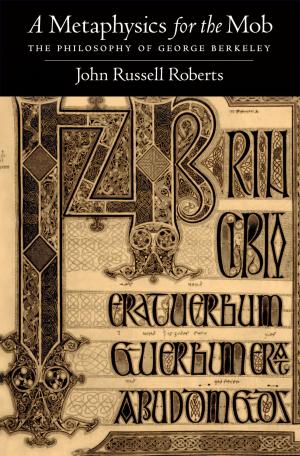Clothed in Robes of Sovereignty
The Continental Congress and the People Out of Doors
Nonfiction, History, Modern, 18th Century, Americas, United States, Revolutionary Period (1775-1800)| Author: | Benjamin H. Irvin | ISBN: | 9780199831692 |
| Publisher: | Oxford University Press | Publication: | April 11, 2011 |
| Imprint: | Oxford University Press | Language: | English |
| Author: | Benjamin H. Irvin |
| ISBN: | 9780199831692 |
| Publisher: | Oxford University Press |
| Publication: | April 11, 2011 |
| Imprint: | Oxford University Press |
| Language: | English |
In 1776, when the Continental Congress declared independence, formally severing relations with Great Britain, it immediately began to fashion new objects and ceremonies of state with which to proclaim the sovereignty of the infant republic. In this marvelous social and cultural history of the Continental Congress, Benjamin H. Irvin describes this struggle to create a national identity during the American Revolution. The book examines the material artifacts, rituals, and festivities by which Congress endeavored not only to assert its political legitimacy and to bolster the war effort, but ultimately to exalt the United States and to win the allegiance of its inhabitants. Congress, for example, crafted an emblematic great seal, celebrated anniversaries of U.S. independence, and implemented august diplomatic protocols for the reception of foreign ministers. Yet as Irvin demonstrates, Congress could not impose its creations upon a passive American public. To the contrary, "the people out of doors"-broadly defined to include not only the working poor who rallied in the streets of Philadelphia, but all persons unrepresented in the Continental Congress, including women, loyalists, and Native Americans-vigorously contested Congress's trappings of nationhood. Vividly narrating the progress of the Revolution in Philadelphia and the lived experiences of its inhabitants during the tumultuous war, Clothed in Robes of Sovereignty sharpens our understanding of the relationship between political elites and crowds of workaday protestors as it illuminates the ways in which ideologies of gender, class, and race shaped the civic identity of the Revolutionary United States.
In 1776, when the Continental Congress declared independence, formally severing relations with Great Britain, it immediately began to fashion new objects and ceremonies of state with which to proclaim the sovereignty of the infant republic. In this marvelous social and cultural history of the Continental Congress, Benjamin H. Irvin describes this struggle to create a national identity during the American Revolution. The book examines the material artifacts, rituals, and festivities by which Congress endeavored not only to assert its political legitimacy and to bolster the war effort, but ultimately to exalt the United States and to win the allegiance of its inhabitants. Congress, for example, crafted an emblematic great seal, celebrated anniversaries of U.S. independence, and implemented august diplomatic protocols for the reception of foreign ministers. Yet as Irvin demonstrates, Congress could not impose its creations upon a passive American public. To the contrary, "the people out of doors"-broadly defined to include not only the working poor who rallied in the streets of Philadelphia, but all persons unrepresented in the Continental Congress, including women, loyalists, and Native Americans-vigorously contested Congress's trappings of nationhood. Vividly narrating the progress of the Revolution in Philadelphia and the lived experiences of its inhabitants during the tumultuous war, Clothed in Robes of Sovereignty sharpens our understanding of the relationship between political elites and crowds of workaday protestors as it illuminates the ways in which ideologies of gender, class, and race shaped the civic identity of the Revolutionary United States.















